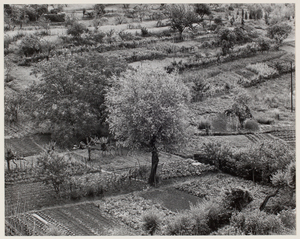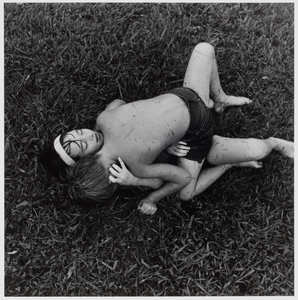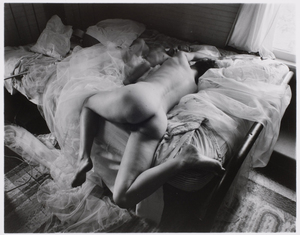Emmet Gowin was born in Danville, Virginia, and grew up in a close-knit religious family whose values formed the foundation for much of his photographic work. Although inspired by an Ansel Adams photograph reproduced in Popular Photography in 1957, he did not pursue the medium seriously until he enrolled in the graphic design program at the Richmond Professional Institute in 1961. In 1965, he studied with Harry Callahan at the Rhode Island School of Design, and he began to concentrate on his family as his primary subject matter. Two years later, Gowin met Frederick Sommer, whose work and friendship would profoundly affect his creative development. He joined the faculty at Princeton University in 1973, and teaches there today. Gowin began photographing European landscapes in the early 1970s; he photographed Mount Saint Helens after its eruption in the 1980s, and his current work includes aerial views of sites of buried nuclear waste in the American West. Since his first solo exhibition at the Dayton Art Institute in 1968, Gowin has been shown at institutions such as the George Eastman House, the Corcoran Gallery of Art, the Philadelphia Museum of Art, and elsewhere. He has received a Guggenheim Fellowship and two National Endowment for the Arts Fellowships.
From his family photographs of the late 1960s through his recent aerial views, Emmet Gowin has devoted himself to analyzing intimacy among individuals and in their relationship to nature. Drawing on his continuous study of philosophy, physics and spirituality, as well as his deep appreciation for the symbolic power of photography, Gowin's work consistently reminds us that we need connections--both physical and emotional--in order to survive. His virtuosity in printing enriches the expressive power of his images and contributes to his ranking as among the most accomplished photographers working today.
Lisa Hostetler
Handy et al. Reflections in a Glass Eye: Works from the International Center of Photography Collection, New York: Bulfinch Press in association with the International Center of Photography, 1999, p. 217.








